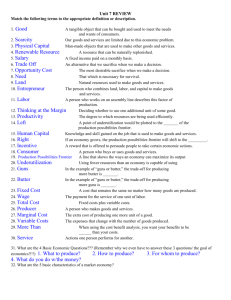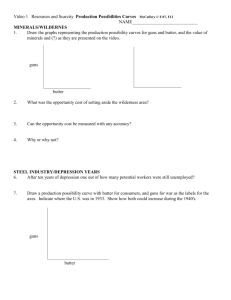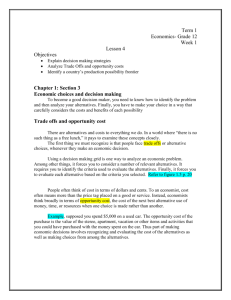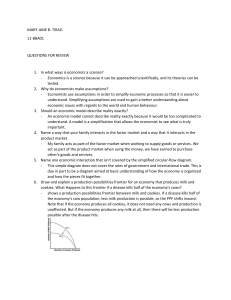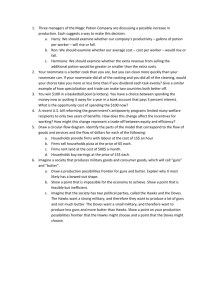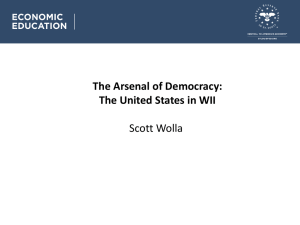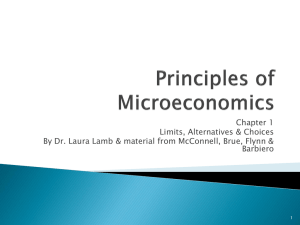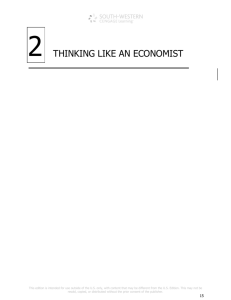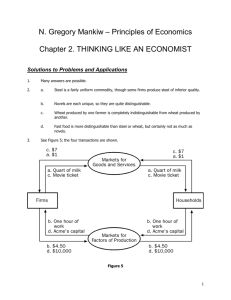Principles of Economics
advertisement
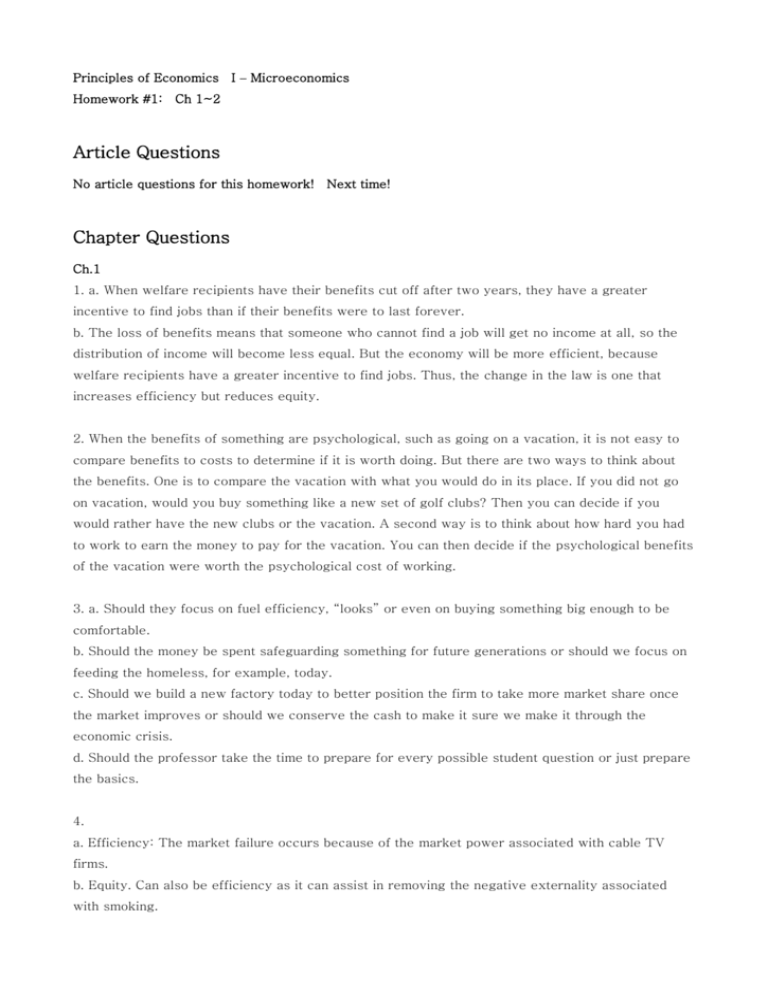
Principles of Economics I – Microeconomics Homework #1: Ch 1~2 Article Questions No article questions for this homework! Next time! Chapter Questions Ch.1 1. a. When welfare recipients have their benefits cut off after two years, they have a greater incentive to find jobs than if their benefits were to last forever. b. The loss of benefits means that someone who cannot find a job will get no income at all, so the distribution of income will become less equal. But the economy will be more efficient, because welfare recipients have a greater incentive to find jobs. Thus, the change in the law is one that increases efficiency but reduces equity. 2. When the benefits of something are psychological, such as going on a vacation, it is not easy to compare benefits to costs to determine if it is worth doing. But there are two ways to think about the benefits. One is to compare the vacation with what you would do in its place. If you did not go on vacation, would you buy something like a new set of golf clubs? Then you can decide if you would rather have the new clubs or the vacation. A second way is to think about how hard you had to work to earn the money to pay for the vacation. You can then decide if the psychological benefits of the vacation were worth the psychological cost of working. 3. a. Should they focus on fuel efficiency, “looks” or even on buying something big enough to be comfortable. b. Should the money be spent safeguarding something for future generations or should we focus on feeding the homeless, for example, today. c. Should we build a new factory today to better position the firm to take more market share once the market improves or should we conserve the cash to make it sure we make it through the economic crisis. d. Should the professor take the time to prepare for every possible student question or just prepare the basics. 4. a. Efficiency: The market failure occurs because of the market power associated with cable TV firms. b. Equity. Can also be efficiency as it can assist in removing the negative externality associated with smoking. c. Equity. d. Efficiency: The market failure occurs because of an Standard Oil’s market power. e. Equity f. Efficiency: Ch.2 1. a. The statement that society faces a short-run trade-off between inflation and unemployment is a positive statement. It deals with how the economy is, not how it should be. Since economists have examined data and found that there is a short-run negative relationship between inflation and unemployment, the statement is a fact, thus it is a positive statement. b. The statement that a reduction in the rate of money growth will reduce the rate of inflation is a positive statement. Economists have found that money growth and inflation are very closely related. The statement thus tells how the world is, and so it is a positive statement. c. The statement that the Federal Reserve should reduce the rate of money growth is a normative statement. It states an opinion about something that should be done, not how the world is. d. The statement that society ought to require welfare recipients to look for jobs is a normative statement. It does not state a fact about how the world is. Instead, it is a statement of how the world should be and is thus a normative statement. e. The statement that lower tax rates encourage more work and more saving is a positive statement. Economists have studied the relationship between tax rates and work, as well as the relationship between tax rates and saving. They have found a negative relationship in both cases. So the statement reflects how the world is and is thus a positive statement. 2. a. A: 40 lawns mowed; 0 washed cars B: 0 lawns mowed, 40 washed cars C: 20 lawns mowed; 20 washed cars D: 25 lawns mowed; 25 washed cars b. The production possibilities frontier is shown in Figure 8. Points A, B, and D are on the frontier, while point C is inside the frontier. c. Larry is equally productive at both tasks. Moe is more productive at washing cars, while Curly is more productive at mowing lawns. d. Allocation C is inefficient. More washed cars and mowed lawns can be produced by simply reallocating the time of the three individuals. 3. a. Figure 6 shows a production possibilities frontier between guns and butter. It is bowed out because the opportunity cost of butter depends on how much butter and how many guns the economy is producing. When the economy is producing a lot of butter, workers and machines best suited to making guns are being used to make butter, so each unit of guns given up yields a small increase in the production of butter. Thus, the frontier is steep and the opportunity cost of producing butter is high. When the economy is producing a lot of guns, workers and machines best suited to making butter are being used to make guns, so each unit of guns given up yields a large increase in the production of butter. Thus, the frontier is very flat and the opportunity cost of producing butter is low. b. Point A is impossible for the economy to achieve; it is outside the production possibilities frontier. Point B is feasible but inefficient because it is inside the production possibilities frontier. c. The Hawks might choose a point like H, with many guns and not much butter. The Doves might choose a point like D, with a lot of butter and few guns. d. If both Hawks and Doves reduced their desired quantity of guns by the same amount, the Hawks would get a bigger peace dividend because the production possibilities frontier is much flatter at point H than at point D. As a result, the reduction of a given number of guns, starting at point H, leads to a much larger increase in the quantity of butter produced than when starting at point D. 4. See Figure 5; the four transactions are shown.
